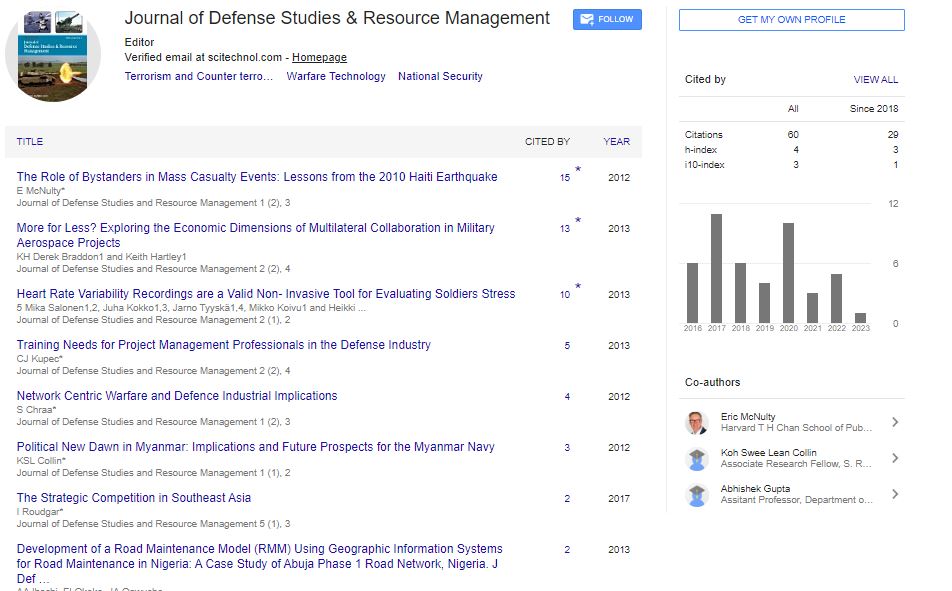Editorial, J Def Stud Resour Manage Vol: 9 Issue: 1
Conflict Management and Peace Economics
Evangeline*
Department of Political Sciences, Northwestern University, United States
*Corresponding Author: Evangeline Department of Political Sciences, Northwestern University, United States, E-Mail: Edward@gmail.com
Received: 05 November, 2021; Accepted: 19 November, 2021; Published: 26 November, 2021
Keywords: Peace, Economics
Introduction
Peace economics is a branch of conflicting economics and focuses on building social, political, and cultural institutions and their interdependent policies and actions with the aim of preventing, mitigating, or resolving violent conflicts within and between communities. This violent conflict can be of any kind and may involve subtle or real violence. Recognizing the cost of violence, economic peace focuses on the benefits (of revitalizing) communities with a view to achieving lasting sustainable peace. Along with the approaches taken in other areas of learning, the peace economy is part of the science which is the evolving part of peace education and conflict.
Despite the accumulation, a peaceful economy differs from economic, military, defense, and security, all of which are branches of conflicting economies. The main difference between a peaceful economy and these related sectors is that a peaceful economy emphasizes the lesson of the existence or conditions of peace, as it differs from learning the absence or existence of conflict, violence, war, or insecurity.
A number of peace economists state explicitly about the use of descriptive scheme that should be applied to a peaceful economy, e.g., the theory of rational choice. In contrast, the basic definition of a peaceful economy is to open to a variety of things. Almost all authors agree that a peaceful economy is part of both good economics and ordinary economics. While for many modern economists, good economic performance may lead them to put a descriptive list or evaluation of policy options where the most important ones are recommended or selected by policymakers, in a peaceful economy, as opposed to a peaceful policy to promote system design that can reliably deliver the desired process.
Peace economics is built on the theory of common programs illustrated by the work of Kenneth Boulding. The earth can be considered a homeostatic system, one that incorporates subcutaneous and social systems. In other words, deviating from the set goal fixes itself with answer loops. Homeostatic systems are often seen in nature, such as ecology and biological physiology (e.g., self-regulation of human size, self-regulation of body temperature). The concept of systems has been adopted in engineering science, for example in the design of thermostats. The user sets the desired target condition (temperature), the tool measures the actual condition, and in order to deviate a correct action (heating or cooling) is taken.
This group of social science and conflict resolution studies is based on three types of military development. First, the types of conflicts that soldiers find themselves in are unpredictable and volatile, and therefore, responses are not easy to plan and organize. In addition to the ‘normal’ wars within the provinces, the military today is increasingly preparing for extraordinary conflicts, such as terrorist threats and attacks, peacekeeping operations and indeed military like equipment. Second, the economic situation in many provinces is deteriorating. Citizens want more resources to be used in care and treatment, so the way soldiers organize and use their resources to carry out their duties is very important. Third, in many lands the recruitment process is now a thing of the past, and this creates new challenges for recruiting military volunteers.
Acknowledgement
None
Conflict of Interest
None
 Spanish
Spanish  Chinese
Chinese  Russian
Russian  German
German  French
French  Japanese
Japanese  Portuguese
Portuguese  Hindi
Hindi 